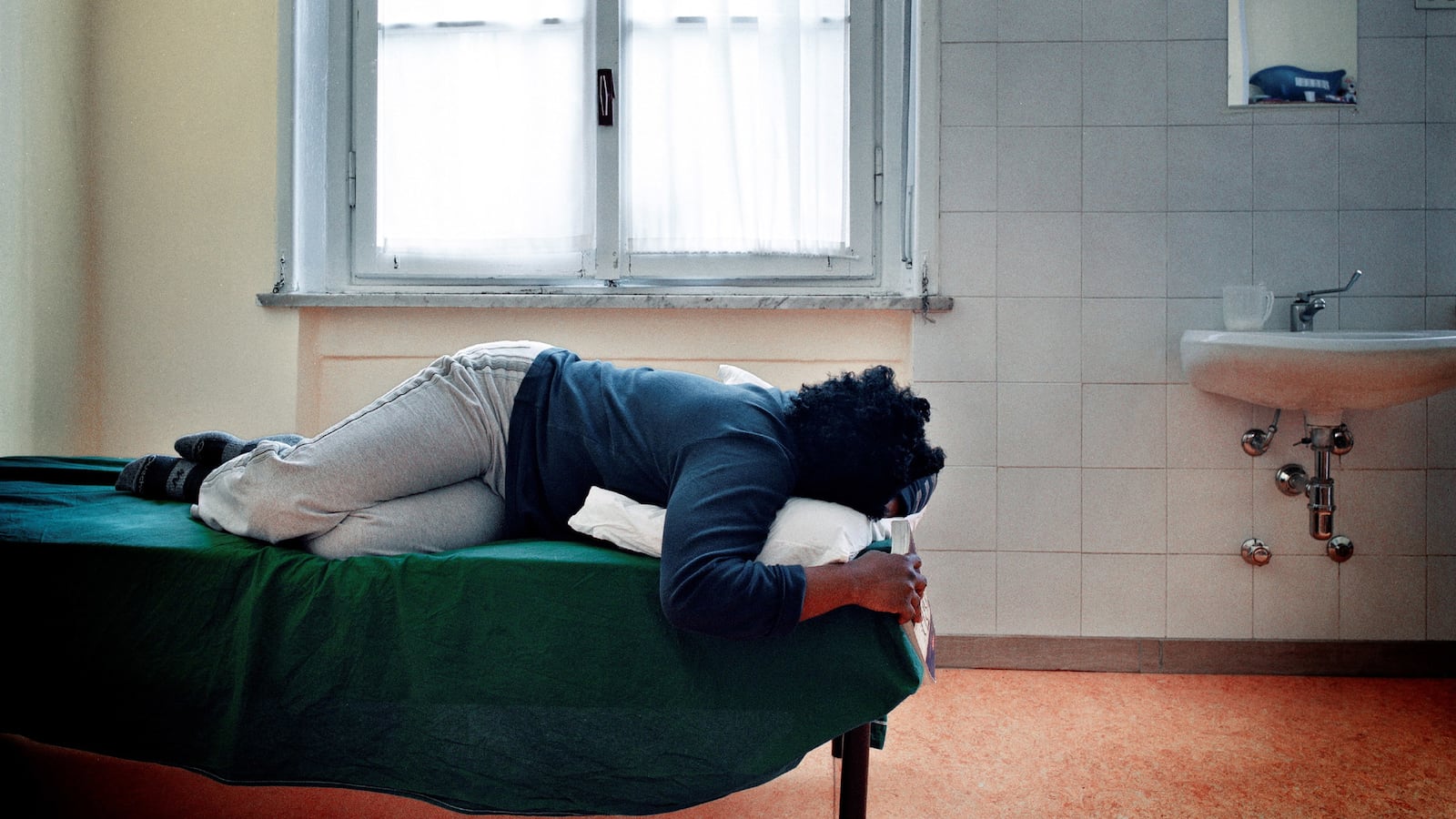On a cold, foggy night On Feb 26, 1998 I walked out a dingy hotel in handcuffs. As they pushed my head into that police car, I realized my life would never be the same.
My detox started six hours after I was transferred to the main jail from a holding facility. As I passed through the medical, they were kind enough to recommend I go to the “kick tank” a large eight-person unit away from the general population. I had never been afforded this luxury in my other stays here. As I dragged my bedding into the unit, the deputy handed me a plastic bag. I was told to puke in it.
If I was intensely sick, they might feel generous enough to call the medical team to give me a shot to stop the nausea. I was given a “kickpack” of some over the counter medications. By the second day, I was hallucinating, searching fruitlessly for drugs in my blankets, and trying to stop a physical assault from another inmate who wanted me to shut up. By the third day, I prayed for death, as the spark of life remained illuminated in me. After five days, I was ready to go to court and beg the system for treatment.
Jail was and remains the catch all, de facto treatment program available to me and many of my peers, which can have fatal consequences.
According to a SAMSHA report in 2011, over 2 million people in the United States are dependent upon or abuse opioids, including heroin and prescription opioids such as oxycodone and hydrocodone. While many people can use opiates appropriately or even recreationally, I fell into the first category. I lived my life as homeless heroin addict in the streets of San Francisco, featured in the documentary Black Tar Heroin: The Dark End of the Street. I had tried various forms of home detox but I was unable to maintain any form of abstinence. I fell into what The National Institutes of Drug Abuse calls a “treatment gap.” NIDA estimates there are over 600,000 individuals unable to receive treatment. Many of those users will end up in jail for crimes related to their habit.
At the time of my last incarceration, I was unaware of any services available to me in the community. I knew that if I went to jail, I might have a chance at a bed in residential treatment. In 2013, SAMSHA defined opioid dependence and addiction—either heroin or prescription pain relievers—as “a serious, life-threatening medical condition.” Withdrawal from these substances can cause intense physical symptoms lasting for days. Yet with this life-threatening condition, incarceration is providing the only intervention many jurisdictions are willing to invest their resources. With the substance abuse services as a defined benefit in the Affordable Care Act, it remains to be seen how states will allocate services to users.
There are numerous barriers to opiate users seeking effective treatment in the community. For one, despite evidence to their efficacy, many insurance plans will not cover the costs of opiate replacement therapies. According to a report by the Open Source Foundation, private insurance covers only 10 percent of addiction treatment costs, with out-of-pocket expenditures and other private funding making up the remaining percentage. Insurance plans that do provide a substance abuse benefit may only cover the cost of a 28-day in-patient rehabilitation program. These programs are affectionately known in the treatment community as a “spin dry” due to the high rate of patient turnover and overall low success rates. Uninsured and underinsured users may be directed to 12-step based or religious programs that are ill equipped to deal with the medical needs of opiate addict in acute withdrawal.
For the both the uninsured and those with insurance, barriers continue to exist in seeking treatment. User JJ from Reddit has experienced this breakdown firsthand. “I live in Southern Illinois and the area I’m at has no drug treatment programs that are free. The only Doctor in my area (about an hour drive) that can prescribe buprenorphine is not taking new patients, and it would be too expensive to go anyways,” he writes on a Reddit page for those struggling with addiction treatment. “The closest Methadone clinic is out of state, and it’s about an 8 hour round trip, it’s only $5 a day, but you have to go every day, the only time they give a dose to take home is on the weekends.”
Out of pocket and even some insured services, when a spot is available, can run $400 for the initial visit with an additional $600 a month in medication costs if the prescriber will not write a prescription for a generic equivalent medication. In my own personal attempts at acquiring methadone, I had to drop out after I could not afford to pay the $450 a month for detox services.
The Drug Abuse Monitoring (ADAM II) report released by the National Institute of Justice shows an increasing trend from 2000 to 2013 in the proportion of arrestees testing positive for opiates. Only one-quarter or fewer of all arrestees had ever participated in any outpatient drug or alcohol treatment and less than 30 percent had ever participated in any inpatient drug or alcohol treatment. The picture is more alarming at a national level where, according to separate data from the Bureau of Justice Statistics, 53 percent of state inmates and 46 percent of Federal inmates in America have a drug use disorder—and yet only 15 percent of state inmates and 17 percent of Federal inmates with abuse or dependence receive drug treatment.
In areas where little or no treatment is available to addicts, jail might be their only option for a point of entry into the system. In a state like Texas, there are 49 drug courts. After calling the SAMSHA hotline to seek treatment in the community, Reddit user BTS was told to look elsewhere. “There are no federally or state funded treatment centers in Texas. No needle exchanges, nothing. It’s pretty ridiculous,” he writes. “I called about getting treatment and they told me the nearest place is 250+ miles away in Louisiana.”
In 2009, there were over 46,000 licensed and funded outpatient drug treatment slots and about 7,500 residential drug treatment beds in Texas, many of these were tied directly to the criminal justice system. Yet, even in a state that agreed inmates needed treatment, in 2011, facing a large budget deficit, Texas made major cuts to health services including substance abuse treatment programs. According testimony by the Texas Criminal Justice Coalition, for one inmate drug treatment programs cost around $3,500 per client, five times less than incarceration. Texas has also refused the expansion of services and provisions in the Health Care Affordability Act, which are being used in many states as a way for low-income residents to pay for opiate replacement programs. These could, in theory, save Texas $18,500 per inmate by avoiding drug related arrests.
Even if users find the strength to shed themselves of their habits while inside, they face new problems. Overdose rates peak in the first few weeks after release from jail or prison. In a study from Washington State, overdose mortality rates in recently released prisoners were 12-fold higher than what would be expected in similar demographic groups in the community. Overdose deaths have now become the leading cause of preventable death in the United States. Without interventions, addicts are released in the community without the tools to maintain stable abstinence.
In San Francisco, the County began a program in 2013 to start the opiate replacement medication buprenorphine pre-release with linkages to services in the community as a way of reducing overdose risk and increasing the inmate’s ability to participate in recovery related programs.
When I entered jail and later treatment sixteen years ago, I never returned to active addiction. Unfortunately, my case is the outlier not the norm. Recently, Acting White House Drug Policy Director Botticelli was quoted as saying: “We cannot incarcerate addiction out of people.” That statement can be regarded as a fact, not an opinion. Until we create a common sense treatment system for the unique needs of opiate users, the revolving door of incarceration and addiction will end in the death of many like myself. They are denied access and waiting on solutions.



